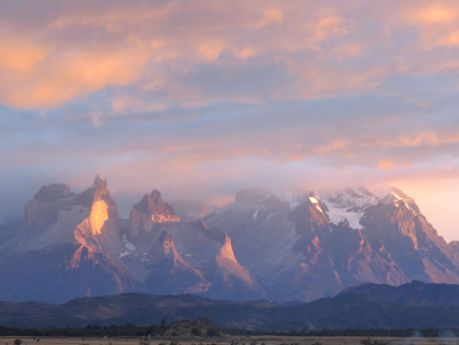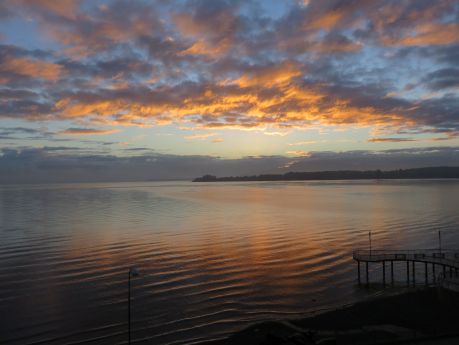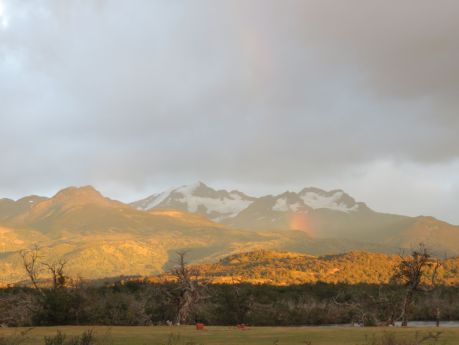PATAGONIA: Part Five – Santiago, An Urban Awakening After Patagonia
April 1. April Fool’s Day and the biggest joke of the day was our group thinking our early morning LAN flight to Santiago, Chile would leave on time. We were at the Puerto Montt Airport by 8 am for a 10:15 flight. Technically, our airplane was there but it was somewhere above us circling above the dense fog that rendered anything beyond the glass windows just an opaque smoky haze.
The arduous pace our group has kept has taken its toll. Some are sick. Most of us are exhausted. The hours of fog-induced delay have pushed our schedule back. The plan to tour Santiago before our night’s activity became an hour stroll among crowded streets and an even more crowded plaza (watch out for the pickpockets!!). We spent little time in Santiago but my initial impressions are of a tattered-appearing city, overcrowded and ill-adept or disinclined to preserve their historical architecture. After a quick shower and change of clothes, we met inside the lobby of Hotel Atton Vitacura to find out which home we’d each be visiting for dinner with a local host.
As this was Russ and my first group tour, we didn’t quite understand what dinner with a local host meant. In this case, volunteers who are part of the Smithsonian community agree to host a home cooked meal for a designated number of people. As we came to understand, the host is provided requested provisions. Our group of four couples was assigned to Andrea, a well-travelled woman in her 30s who spoke fluent English. A driver picked each group up and delivered us to the respective front door. In our case, Andrea and her five-year-old (total cutie) son Read more





